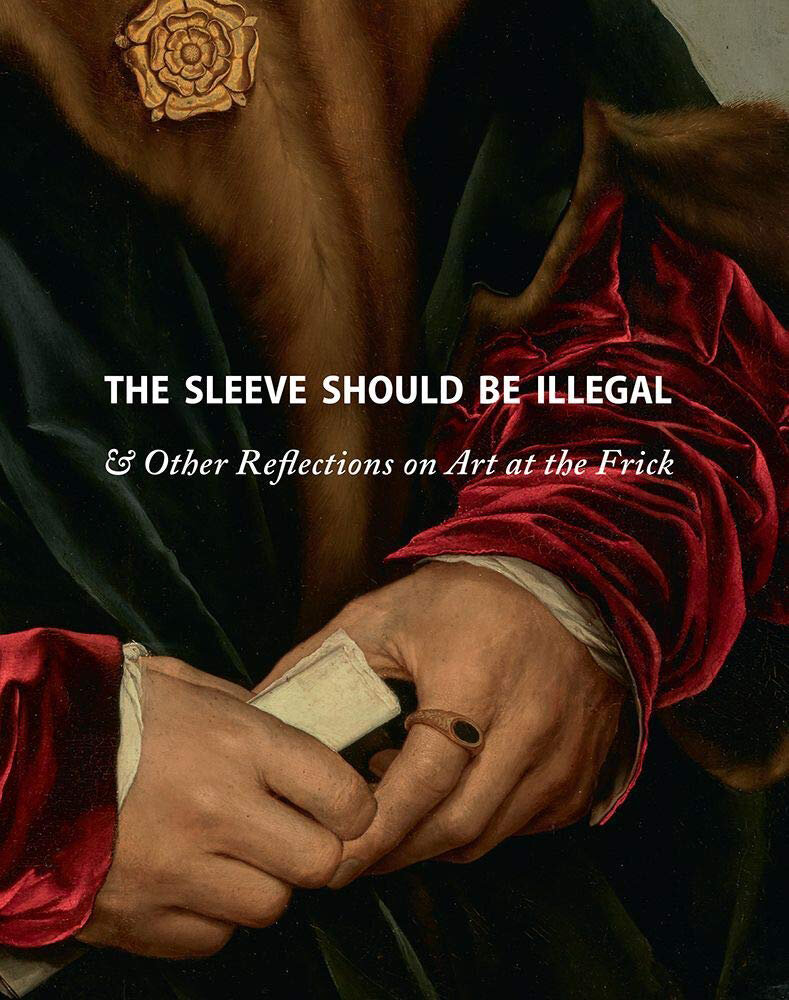This essay was published in The Sleeve Should be Illegal & Other Reflections on Art at the Frick.
She’s turning and fleeing but stops me and holds me at the edge of the glass case at the border of the Enamels Room. Tucked away and stilled through the centuries in cast bronze, she remains entirely active: open-mouthed, enraged, shouting. I hear her. Danger is lurking; she just escaped. This violated woman shields her sex and breasts with elegant arms and fingers. Every centimeter of this sculpture is exquisitely wrought and perfectly proportioned. Her toes are precisely bent and every strand of hair is sublimely mussed; remarkably, we can even see her teeth. As a nautilus, compact and open, coiled and turned, a spiral of (female) energy, she blows up the stasis of the entire room.
Although she is a bit out of place amid the colorful Limoges enamels and decorated ceramic plates, I am drawn to appreciate the way she anchors the display case. Bare, vulnerable, and impolite amid the decorous—the enamels, the men, the myths, and the gloss of the large seventeenth-century bronzes in other galleries—she feels contemporary in spirit and form. The precision and strength of this figure extend to its sparse presentation. Balanced on a very fine slender foot with a tiny counterbalance on the toe of the opposite foot, she touches “ground” perched on a plain plinth rather than a traditional pedestal. Without a companion—no animal, no plant, no grasping lover or saint, not even a scrap of draped cloth—she is not “presented” and thus is more heroic and urgent. Over time, I note that her fierce eyes glisten with tiny silver implants that are matched by erotic punctuations of silver at the tips of her nipples. The placement of these four spots of light makes her skin darker, more beautiful, and enhances the nuances in the patina. I cannot help thinking about the moment the sculptor inserted these tiny solid silver rods into the bronze (no mere welds for this beauty), just as I cannot stop feeling the intense delight he (assumed because women were not granted the honor of sculpting) must have derived in modeling the inside of the hands and every pubic hair.
Bronze is no skin of paint sitting on canvas; time and attention are melted into the density of the material. The artist first models in clay, then plaster, followed by wax, and plaster again, until the wax is dissolved and replaced with liquid bronze. After the cooled metal casting is released from the plaster shell, a great deal of grinding, carving, and polishing completes the process. Absorbed into the object is so much touching and handling that the thing very nearly becomes a power object, a talisman. As the form gains power, it reflects the artist’s experience of falling in love with the work.
Making a small work is an unforgiving process. There is no room for missteps, and the Shouting Woman is an example of exquisite perfection, her bold demeanor wrought with great feeling and delicacy. The plush palace that is the Frick becomes eminently more compelling when I visit with this giant of a sculpture.

